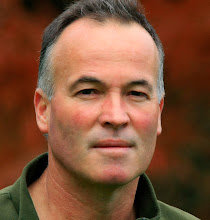To think it all comes from a dilapidated house in Alabama.
85% of the world's production ends up here in New Zealand.
It gets scattered over our beautiful national parks in the form of carrot and cereal baits. It's meant for the possums, but it's irresistible to everything that moves, from insects, dogs and goats, to deer, horses and sheep. Worst of all, native birds are dying for a taste too -
kea,
weka, kiwi, robins, fantails - and the substance that is supposed to improve their habitat, is actually killing them.
Know what we're talking about yet?
Three hundred and fifty people came to
Hokitika from all over New Zealand to watch our preview screening of
Poisoning Paradise - Ecocide in New Zealand, a new documentary about the use of 1080 in New Zealand. Most of the viewers already knew that animals die slow, painful deaths from eating 1080 dropped from the sky. But people were surprised to see
- how
many animals are dying (It is calculated 100's of dogs, and over 10,000 deer -
annually)
- that
endangered animals are dying (1000's of native species, annually)
- that
pets and
domesticated animals are regular victims
- that
the operators, and authorities, cover it up
It's gut-wrenching to hear farmers describing their animals as they die excruciating deaths. But when the same people say that
the authorities will pay compensation for their animals as long as they write on the invoice that it is for
track maintenance or
stock feed, it's sickening.
The general public need to see this documentary. Spread the news. It's time to get rid of 1080 once and for all.
 Wayne Fairhall of Kaiata never wants to be put through that experience again. The experience of arriving home to find dead deer with blood and foam around their mouths, scattered through his paddocks, and his partner holding a deer as it died, screaming in agony.
Wayne Fairhall of Kaiata never wants to be put through that experience again. The experience of arriving home to find dead deer with blood and foam around their mouths, scattered through his paddocks, and his partner holding a deer as it died, screaming in agony.








